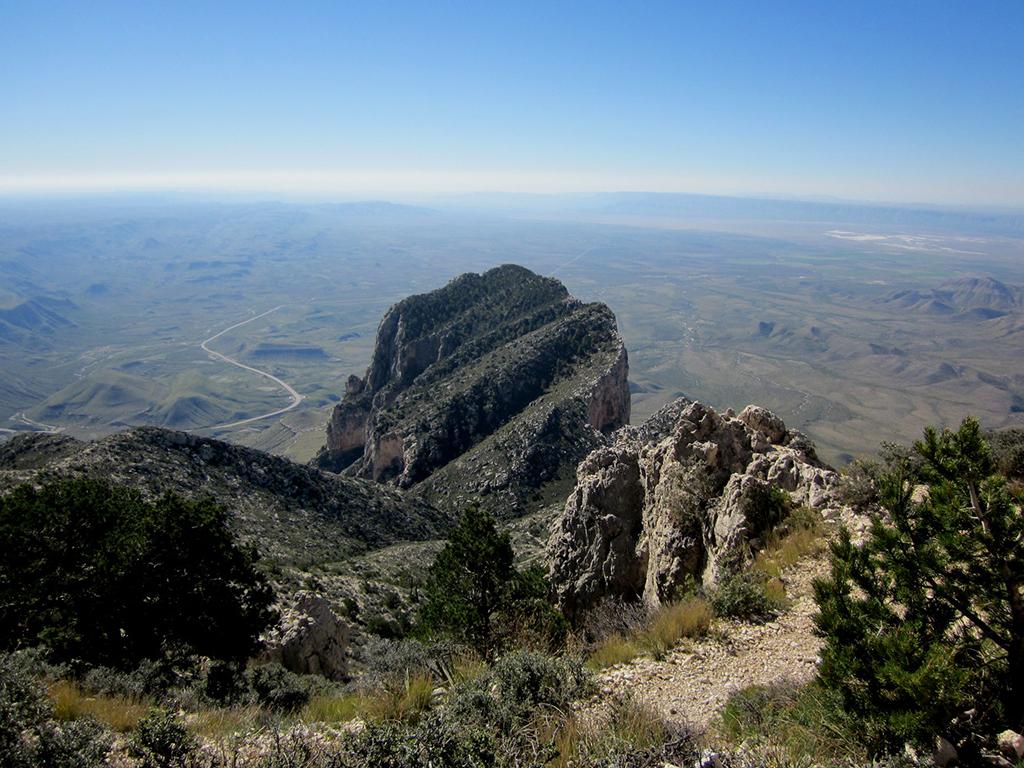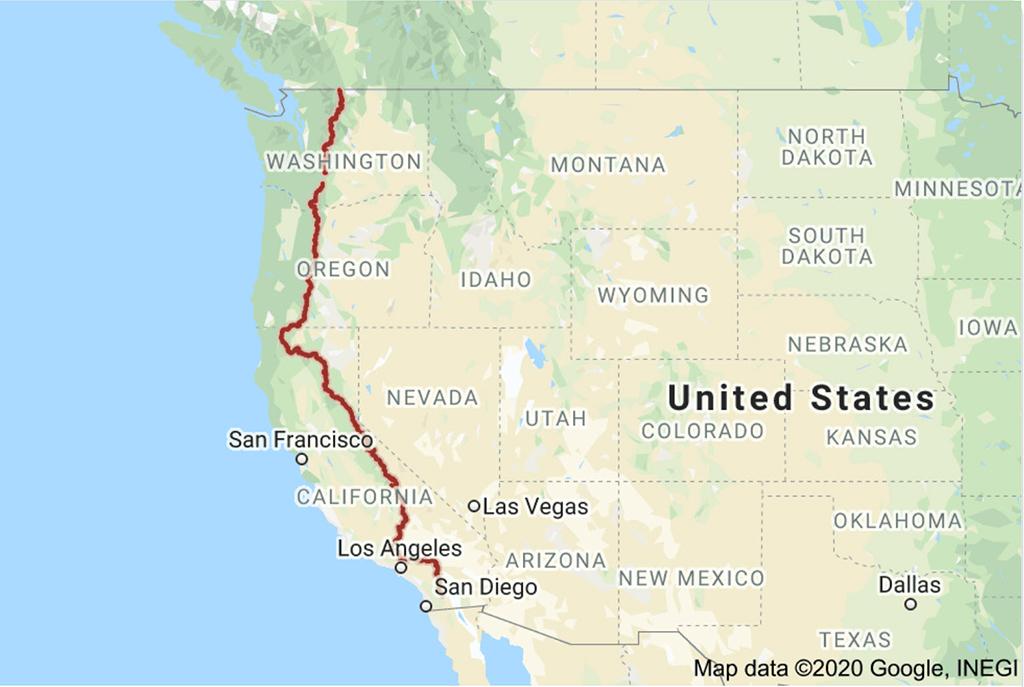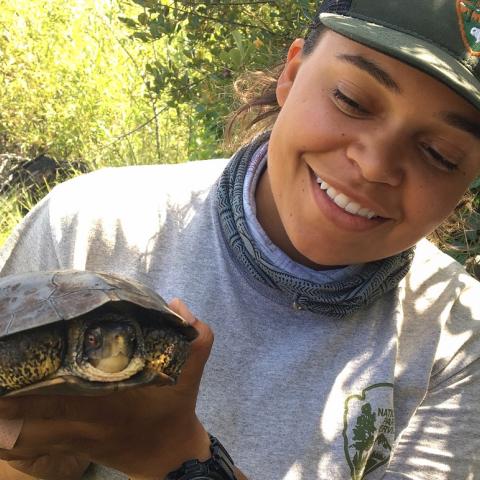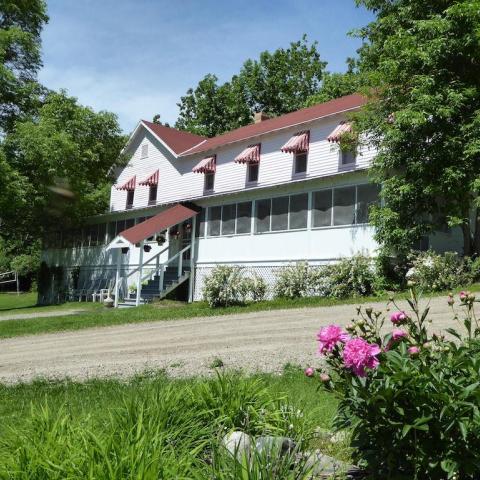
Sunlight and storm clouds over Cliff Palace, Mesa Verde National Park / Rebecca Latson
It’s March 2020 and now time for another national parks quiz with a little trivia thrown in. Are you ready to test your national parks knowledge? See how much you know on your own, first, before checking the answers at the end of the page.
1. Cliff Palace in Mesa Verde National Park is the largest cliff dwelling, with over 150 individual rooms and 23 kivas. What’s the second largest cliff dwelling in this park?
a) Step House
b) Long House
c) Balcony House
d) Spruce Tree House
2. All of the following parks straddle the Pacific Crest National Scenic Trail EXCEPT:
d) Lassen Volcanic National Park

Lassen Peak, Lassen Volcanic National Park / NPS
3. What is the name of the mountain range of which Lassen Peak in Lassen Volcanic National Park a part?
a) Rocky Mountain Range
b) Cascade Mountain Range
c) California Coast Range
d) Sierra Nevada Range

Sunlight and snowfall over the landscape, Arches National Park / Rebecca Latson
4. Which feature in Arches National Park made an appearance in the comedy City Slickers?
a) Delicate Arch
b) Balanced Rock
c) North Window
d) Landscape Arch

Sunset over Rainy Lake, Voyageurs National Park / jck_photos
5. What percentage of Voyageurs National Park is water?
a) Over 30%
b) Over 40%
c) Over 50%
d) Over 60%

Road through the foggy redwoods, Redwood National and State Parks / Connor McSheffrey
6. What is the “Emerald Mile” in Redwood Forest National and State Parks?
a) A mile-long patch of emerald-green grassland
b) An old gemstone quarry
c) A long stretch of unusually tall redwoods
d) A mile-long trail leading to an overview of the park

The Margerie Glacier and distant Mt. Fairweather at the end of the Tar Inlet, Glacier Bay National Park & Preserve / NPS-Bob Meadows
7. Why is Glacier Bay National Park & Preserve considered a living laboratory?
a) Scientists can study the Alaskan brown bear in its native habitat
b) Scientists can study diverse varieties of marine life
c) Scientists can study the retreat of glaciers
d) Scientists can study the 200 species of birds
8. What is a hammock in the context of Everglades National Park?
a) small, bare land masses scattered throughout the swamps
b) a dense stand of broad-leafed trees that grow on a natural rise of only a few inches in elevation
c) thick vegetation strung out between the mangroves
d) water trails through the thick reeds and vegetation
9. The caves in Wind Cave National Park consist of:
a) granite
b) sandstone
c) limestone
d) basalt
10. What tall spruce tree can be found in Olympic National Park?
a) Brewer’s spruce
b) white spruce
c) Sitka spruce
d) Serbian spruce
Now for a little bit of national parks trivia.
To get to Isle Royale National Park, located on Lake Superior in Michigan, you need to arrive either by boat or seaplane. Isle Royale is the only national park to close completely for the winter due extreme weather conditions. In the 1890’s miners and prospectors headed over to Isle Royale in droves to search for copper.

Morning colors at Park Point, Mesa Verde National Park / Rebecca Latson
The lowest elevation in Mesa Verde National Park is 6,015 feet at Soda Canyon, and the highest elevation is 8,571 feet at Park Point. You can get some awesome sunrise and cloud/stormy weather at Park Point. You can also get a cell signal there, if all other tries elsewhere within the park fails. I know because I’ve captured photos there *and* called my mother to let her know I was doing ok.

Sunrise at Lake Louise, Banff National Park / Rebecca Latson
Established in 1885, Banff National Park is Canada’s oldest national park and also its first national park. It’s also a part of UNESCO’s Canadian Rocky Mountain World Heritage site. Originally starting out as a 10-square-mile reserve around Sulphur Mountain Hot Springs, Banff National Park is now 2,564 square miles in area and is the second-largest of Canada’s mountain parks, behind Jasper National Park. Yessiree, our neighbor to the North has some awesomely beautiful national park scenery.
Congaree National Park preserves the “largest intact expanse of old growth bottomland hardwood forest remaining in the southeastern United States.” The Congaree were a group of Native Ameicans who lived in what is now central South Carolina, along the Congaree River. One of the rarest phenomenons in the world happen in this national park: the synchronous fireflies that light up the forest for a month between mid-May and mid-June.

The view of El Capitan from Guadalupe Peak, Guadalupe Mountains National Park / Tom Miller
Guadalupe Peak, in Guadalupe Mountains National Park, is the highest point in Texas, with an elevation of 8,751 feet above sea level. Among the wildlife found in this national park are 16 different species of bats. One hundred four degrees Fahrenheit was the hottest temperature recorded in the park, in 1994.

A view of the Fairyland Loop Trail, Bryce Canyon National Park / Rebecca Latson

A tree on a lithified sand dune, Zion National Park / Rebecca Latson
Bryce Canyon National Park and Zion National Park are only about 40 miles apart, as the crow flies. Bryce Canyon’s rocks, however, are softer than Zion’s, so that the rate of erosion at Bryce Canyon is 40 times faster than at Zion. This means you can actually see the results of that erosion in a human lifetime!
Quiz Answers

Long House, Mesa Verde National Park / Rebecca Latson
1. B.
Long House is the second largest cliff dwelling within Mesa Verde National Park, containing some 150 rooms and 21 kivas. The park offers daily ranger-guided tours of Long House, in addition to other cliff dwellings. Starting March 9, 2020, you can purchase tour tickets online. Click here to see what tours are offered, prices, and how to purchase your tickets.

A map of the Pacific Crest Trail / Google
2. A.
Sitting out there on the Olympic Peninsula, Olympic National Park has some great hiking trails, but none of them are the PCT.
3. B.
Lassen Peak is at the southern end of the Cascade Mountains. This mountain range also contains other volcanic mountains such as Mount Rainier, Mount St. Helens, and Mount Shasta.

Snowy steps up to the North Window, Arches National Park / Rebecca Latson
4. C.
Considered to be one of the most scenic locations in Arches National Park, the Windows Section contains several arches, including the North Window, which made an appearance in the comedy movie City Slickers. Other arches in the Windows Section are Turret Arch, South Window, and Double Arch.
5. A.
Over 30% (actually, 35%) of Voyageurs National Park is covered in water. Four lakes are connected by narrow channels and streams. So, one of the best ways to experience this national park is by canoe/kayak/boat.
6. C.
The Emerald Mile is a long stretch of unusually tall redwood trees.
7. C.
While scientists can study diverse natural habitats in Glacier Bay National Park, the reason it’s considered a living laboratory is because scientists can study the natural processes that occur when a glacier retreats.
8. B.
In context to Everglades National Park, hammocks are not beds made of canvas or rope mesh strung between two trees, but it they described as "a dense stand of broad-leafed trees that grow on a natural rise of only a few inches in elevation."
9. C.
The vast labyrinth of caves in Wind Cave National Park are primarily made of limestone and portions of the caves are more than 300 million years old.

The "Tree of Life," aka the "Tree Root Cave," Olympic National Park / Rebecca Latson
10. C.
Tall Sitka spruce is found all over Olympic National Park. You can even see a Sitka spruce on Kalaloch Beach, literally suspended by its roots over a cave created by the stream erosion of the bluff. They call that tree the “Tree of Life” or the “Tree Root Cave.”
References
Don Lago, Zion And Bryce Canyon Trivia, Riverbend Publishing , 2011
https://www.nationalparkstraveler.org/2008/05/national-park-system-geofactoids-quiz-straddlers
https://play.howstuffworks.com/quiz/lassen-volcanic-national-park-quiz
https://play.howstuffworks.com/quiz/voyageurs-national-park-quiz
https://play.howstuffworks.com/quiz/redwood-national-park-quiz
https://play.howstuffworks.com/quiz/glacier-bay-national-park-quiz
https://play.howstuffworks.com/quiz/everglades-national-park-quiz
https://play.howstuffworks.com/quiz/wind-cave-national-park-quiz
https://www.nps.gov/wica/learn/nature/wind-cave-geology.htm
https://play.howstuffworks.com/quiz/olympic-national-park-quiz
https://www.nationalparked.com/mesa-verde
http://www.softschools.com/facts/national_parks/isle_royale_national_park_facts/2848/
https://theculturetrip.com/north-america/articles/the-10-oldest-national-parks-in-the-world/
http://justfunfacts.com/interesting-facts-about-banff-national-park/
https://en.wikipedia.org/wiki/Banff_National_Park
http://www.softschools.com/facts/national_parks/guadalupe_national_park_facts/2831/




 Support Essential Coverage of Essential Places
Support Essential Coverage of Essential Places







Comments
I enjoyed taking the trivia quiz but apparently need to visit some more parks before the next one comes out!
As an alumnus of Everglades NP (1980-82), I was a bit disappointed that the "correct" answer to question # 8 is, in fact, incorrect. Hammocks are the opposite of "bare land masses" but instead are locations supporting heavily vegetated tropical forests. As described on the park website, a hammock is a dense stand of broad-leafed trees that grow on a natural rise of only a few inches in elevation. (The relatively higher elevation is a key factor in where a hammock grows.) Hammocks can be found nestled in most all other Everglades ecosystems. In the deeper sloughs and marshes, the seasonal flow of water helps give these hammocks a distinct aerial teardrop shape. When I think of the classic Everglades landscape (the "river of grass"), it includes the many "islands of trees" (the hammocks) scattered across the seasonally-flooded sawgrass "prairie." For more information, see: https://www.nps.gov/ever/learn/nature/hardwoodhammock.htm
Hey Mike, blame the editor, who was away in Florida at...Everglades and Big Cypress last week doing field research and not proofing stories. But you're absolutely right, and we've fixed it in the article above. Thanks for the keen eyes!
I do not think that "miners and prospectors" ever "headed in droves to Isle Royale to search for copper" in the 1890s or any other time. That is greatly overstating the numbers who went to the island after copper.